IN THIS ISSUE
- North American bats at risk
- Q&A with conservation chief
- How going native helps wildlife
- Give barn owls a boost in Georgia
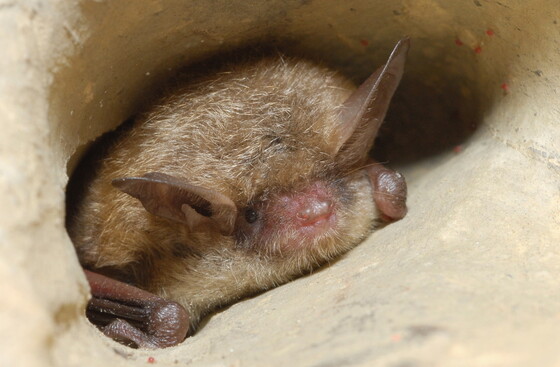 Tricolored bat, one species under siege (Pete Pattavina/USFWS)
North America’s first State of the Bats gives a sobering outlook for the winged mammals. According to the North American Bat Conservation Alliance report:
- More than half of the 154 known bat species on the continent could face severe population declines over the next 15 years.
- During that time, up to 82 percent of bat species will be negatively affected by climate change, especially extreme drought and temperatures.
- The scope and severity of threats – including habitat loss, wind turbines and the bat-deadly disease white-nose syndrome – are increasing.
The news isn't all bad. The report outlines ways to help and emphasizes the wide-ranging benefits of bats, from improving crop yields to eating insect pests. It also highlights the promise of focused, collaborative conservation efforts.
Case in point, the lesser long-nosed bat was once endangered in Mexico and the U.S. But thanks to international efforts, it is now delisted and recovered in both countries.
The North American Bat Conservation Alliance is another example. The coalition involving the U.S., Mexico and Canada created the 2023 State of the Bats report with Bat Conservation International and others.
“Bats face many challenges and the conservation landscape is increasingly complex,” said Dr. Jeremy Coleman, alliance co-chair and white-nose syndrome coordinator for the U.S. Fish and Wildlife Service. “While there is more to do, the level of international collaboration we have achieved for bat conservation in North America is a bright spot and a cause for optimism going forward.”
Full report: 2023 State of the Bats
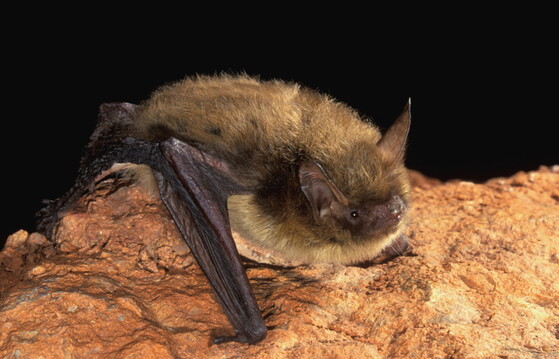 Northern long-eareds disappearing from the state (J. Scott Altenbach/Bat Conservation International)
THE VIEW FROM GEORGIA
Ten of the 16 bat species in Georgia will likely be listed as a high priority for conservation when the ongoing revision of the state's Wildlife Action Plan is done, said Katrina Morris, a program manager with DNR’s Wildlife Conservation Section.
One significant reason why: white-nose syndrome. First documented in Georgia in 2013, this fast-spreading disease has sliced the number of bats in the state’s northern caves by more than 90 percent, according to Morris, who leads bat monitoring for DNR.
The northern long-eared is one of the bats decimated. Although previously found in caves and forests across north Georgia, “We haven’t caught or seen a northern long-eared since 2017,” Morris said. “And that’s entirely because of white-nose. … The northern long-eared is one we’ve pretty much lost in the state.”
The species was upgraded from federally threatened to endangered on March 31.
Morris considers the State of the Bats, which she helped compile as a North American Bat Conservation Alliance representative for the southeastern U.S., timely and instructive.
“Our bats statewide continue to be threatened by (white-nose) as well as the many other threats outlined. The report also gives people information about what they can do for bats before it’s too late!”
Related: tricolored bat – little bat, big trouble
ROOST MONITORS WANTED
One way to help this summer is volunteering to count bats at sunset as they leave a roost. Monitoring is easy, fun and provides DNR needed data. Learn more.
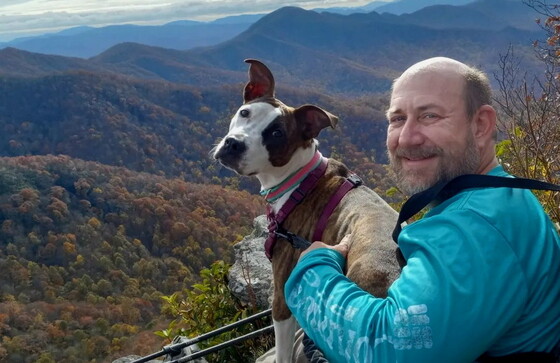 Wildlife Conservation Section Chief Matt Elliott (Special to DNR)
From mapping where rare species live in Georgia to coordinating the work and funding to restore them, Matt Elliott is well-versed in the state’s wildlife and ecosystems. Ditto for his familiarity with DNR's Wildlife Conservation Section, the agency he was just named to lead.
In this Q&A, the ecologist and 18-year DNR veteran discusses the conservation challenges facing Georgia, plus wildlife success stories and his plans for the agency charged with conserving and protecting native wildlife not hunted or fished for, plus rare plants and natural habitats.
“I think we’ve got a really good reputation around the country,” Elliott said. “I’m certainly not planning on shaking up things a lot. If we make changes, they’re gonna be smart ones.”
Read on.
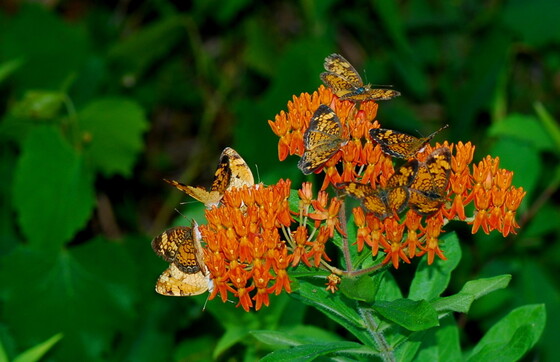 Butterflyweed at work (Terry W. Johnson)
By TERRY W. JOHNSON
The most popular outdoor activity in the U.S. is not hunting, fishing, birding or hiking. It’s gardening. That interest also is growing. For example, Burpee sold more seeds in 2021 than ever in the company’s nearly 150-year history.
The surge in gardening has been washing across Georgia. One way gardeners in our state are expanding their efforts is by adding native plants to their yards.
But why natives? And what about certifying your yard for gardening with them?
Find answers and more, such as natives both beautiful and beneficial for wildlife..
Terry W. Johnson is a retired DNR manager and executive director of TERN, friends group of the Wildlife Conservation Section. Check out past columns and his blog. Permission is required to reprint a column.
NATIVE PLANT RESOURCES
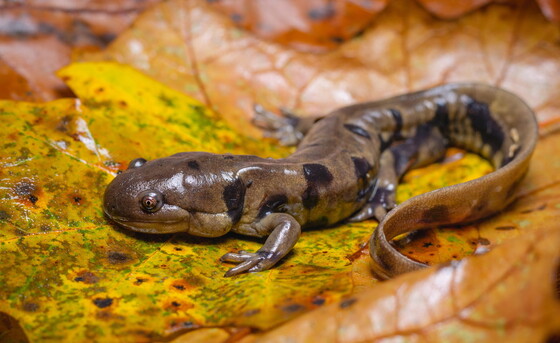 Eastern tiger salamander (Greg Brashear)
A search for eastern tiger salamanders turned up larvae in ephemeral pools near Cartersville in March, further confirmation that the State Wildlife Action Plan species is not confined to the Coastal Plain, as once thought. This month, biologists monitoring reticulated flatwoods salamanders in southwest Georgia also collected tissue samples from larvae and discovered a new site for these endangered sallies.
Bipartisan legislation that would provide critical funding to restore and help keep healthy the nation’s wildlife and habitats is alive again in the U.S. Senate. Sens. Thom Tillis, R-N.C., and Martin Heinrich, D-N.M., reintroduced Recovering America’s Wildlife Act, a version of which passed the House last year but failed to make it to a full Senate vote. Georgia fact sheet and proposed projects.
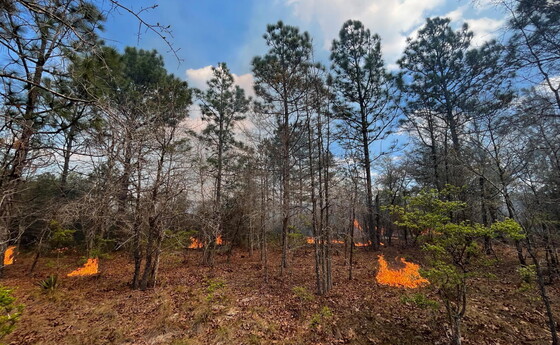 Growing-season burn on Canoochee River tract (Ash Curtis)
Prescribed fires this spring have included private property along the Canoochee River – where the burn by DNR and the Orianne Society benefited rare sandhills rosemary (Ceratiola ericoides) and sandhills milk-vetch (Astragulus michauxii), plus a large population of gopher tortoises – as well as on Sprewell Bluff Wildlife Management Area and two neighboring tracts. The Sprewell Bluff fire was the first in three years for acres of old-growth montane longleaf pine and a globally endangered hog plum glade.
No matter your wildlife viewing fancy, this year’s round of Wildlife Viewing Grant recipients has something to suit. The six projects chosen by the DNR program vary from a bat call detector and other gear to inform people about bats in Forsyth County to a bird’s nest-design viewing tower near Rising Fawn and interpretive signs along trails at Cubihatcha Outdoor Education Center in Henry County.
 Right whale mom Aphrodite with her calf in December (CMARI/NOAA permit 20556)
The calving season for endangered North Atlantic right whales proved less productive than hoped, or needed. According to DNR, 11 mother-and-calf pairs were seen in the Southeast this winter, including only one first-time mom, a calving interval twice as long as expected for the others (7.8 years on average vs. a calf every three to four years) and too few calves (optimal calving and more breeding-age females becoming moms should yield about 20 calves). Note: The calf count does not include a lone neonate that stranded and died in North Carolina.
The proposal to federally list red knots as threatened has added more acres of critical habitat, including in Georgia. The U.S. Fish and Wildlife said new information led to changing the sites deemed critical to conserving the declining shorebirds. Rufa red knot habitat FAQ.
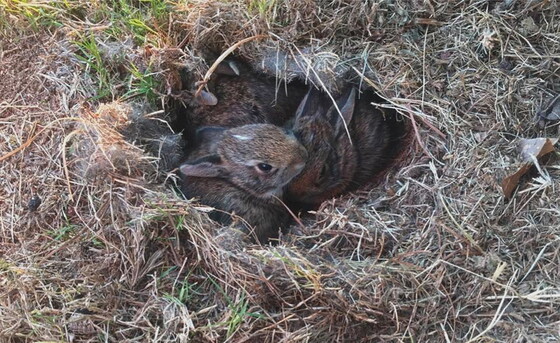 No help needed here: cottontail nest with young (Heather Sloan)
Quick hits:
- When you see young wildlife alone in the spring, please leave them be: Most times a parent is not far away.
- Toombs and Tattnall County residents are again being asked to report Argentine black and white tegus, part of a DNR-led effort to eradicate a wild population of the South American lizards in the area.
- With sea turtle and manatee sightings increasing on the coast, Georgia boaters should be on the lookout and report sea turtles or manatees they hit or see hurt or dead (800-272-8363).
- What’s the first BearWise basic? Don't feed or approach bears – actions that condition them to associate people and homes with food and risk the safety of all involved.
- Highly pathogenic avian influenza has not spared endangered California condors: Six of 18 that died in the Arizona/Utah flock tested positive.
- While not appreciated by some, eastern diamond-backed rattlesnakes are a fascinating part of Coastal Plain wildlife, as explored in this post.
- Anglers can land a Georgia Trout Slam and a Bass Slam, with DNR adding a trout trio challenge as a sister program to catching five of 10 bass species.
- Celebrate Earth Day at DNR’s 28th CoastFest, April 22 at Mary Ross Waterfront Park in Brunswick.
- Also on Earth Day, Gaskins Forest Education Center in Alapaha holds Day in the Woods, featuring everything from live animals to a prescribed fire demo, and Georgia Audubon kicks off the month-long Georgia Bird Fest, with bird-related activities scheduled statewide.
 Youth Birding T-shirt Art Elementary Division winner: palm warbler by Ryan Ton, 10, of Duluth
Names in the news: Four budding bird artists have been named T-shirt Art Contest winners in Georgia’s annual Youth Birding Competition. The overall champ and High School Division winner is a golden eagle drawn by Kevin Lin, 17, a student at SKA Academy of Art and Design in Duluth. Other winners include: a bay-breasted warbler by Emma Wang (Primary Division), a palm warbler by Ryan Ton (Elementary) and a rufous hummingbird by Mindy Wang (Middle), all of whom also are SKA Academy students. The contest drew 108 entries from 35 public, private and home schools. Pheasants and Quail Forever recognized DNR's Bobwhite Quail Initiative with a Conservation Service Award. Private Lands Program wildlife biologist Tony Kroeger accepted the honor on the agency's behalf.
"Drunk birds: Expert explains," with DNR's Todd Schneider, WAGA-TV (ch. 5, Atlanta). Also: "Beware of drunken birds," WSB-TV (ch. 2, Atlanta) and others.
(+audio) "Right whales aren't having good year," Maine Public. Related: "Whale remains entangled after second rescue attempt," CapeCod.com; "Study: Right whales found in Gulf of St. Lawrence all year," Canadian Broadcasting Corp.
"Boating caution: Slow down, watch out for manatees, sea turtles," EIN Presswire
"Historic wildlife bill will help prevent extinctions in Georgia," Albany Herald
(+audio) "Athens ecologist promoted to DNR wildlife conservation chief," Athens Banner-Herald and others, including WUGA-FM (91.7, Athens)
"Stunned biologist looks into tortoise hole to see gator 'smiling back,'" Georgia Public Broadcasting and others
"Last-minute bill protects public access to fishing," Axios Atlanta. Also: Georgia Public Broadcasting.
"DNR announces youth T-shirt art winners," YahooNews
"Removing century-old dam would restore species, but will it be funded?" WFAE-FM (90.7, Charlotte, N.C.)
"Where you can find Georgia's best hiking trails (Tallulah Gorge State Park)," The Atlanta Journal-Constitution
"Spring birds at their best on Colonial Coast Trail," Albany Herald
"Ogeechee Tech students complete wildland firefighter training," AllOnGeorgia
"Bluebird Trail promotes conservation, outreach for kids," The Rockdale Citizen
"Have no fear: Pizza Eagle is here," Insider.com
 AP video on efforts to save endangered right whales
"Endangered Species Act Struggles to Save Right Whales," Associated Press
(audio) "Where Are the Right Whales? Scientists Find Clues Miles Away," NPR
"How AI Is Being Used for Whales," Bloomberg News
"Women in Game," women wildlife biologists in Georgia DNR
"The Need for Connectivity," Florida panther FP224, fStop Foundation
"Hellbent," hellbenders and a Pennsylvania town face clean-water concerns, Wild Lens Collective and Running Wild Media
"Trail Camera Catches Coyote Chasing Bobcat," Bangor (Maine) Daily News
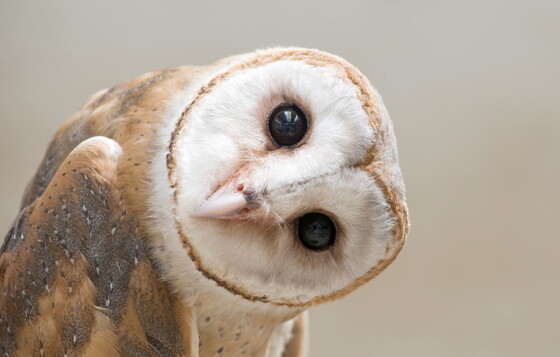 Blog post offers advice on giving barn owls a nesting boost (Adobe)
Barn owls are one of the world’s most abundant and widely distributed owl species. Yet in Georgia these pale, heart-faced raptors are in decline and a species of concern. In this blog post, DNR's Abbie Young profiles barn owls and explains how Georgians can help them by adding nest boxes in suitable habitat.
CREDIT
Masthead: grand-prize golden eagle by Duluth 11th-grader Kevin Lin in Youth Birding T-shirt Art Contest
Top
|